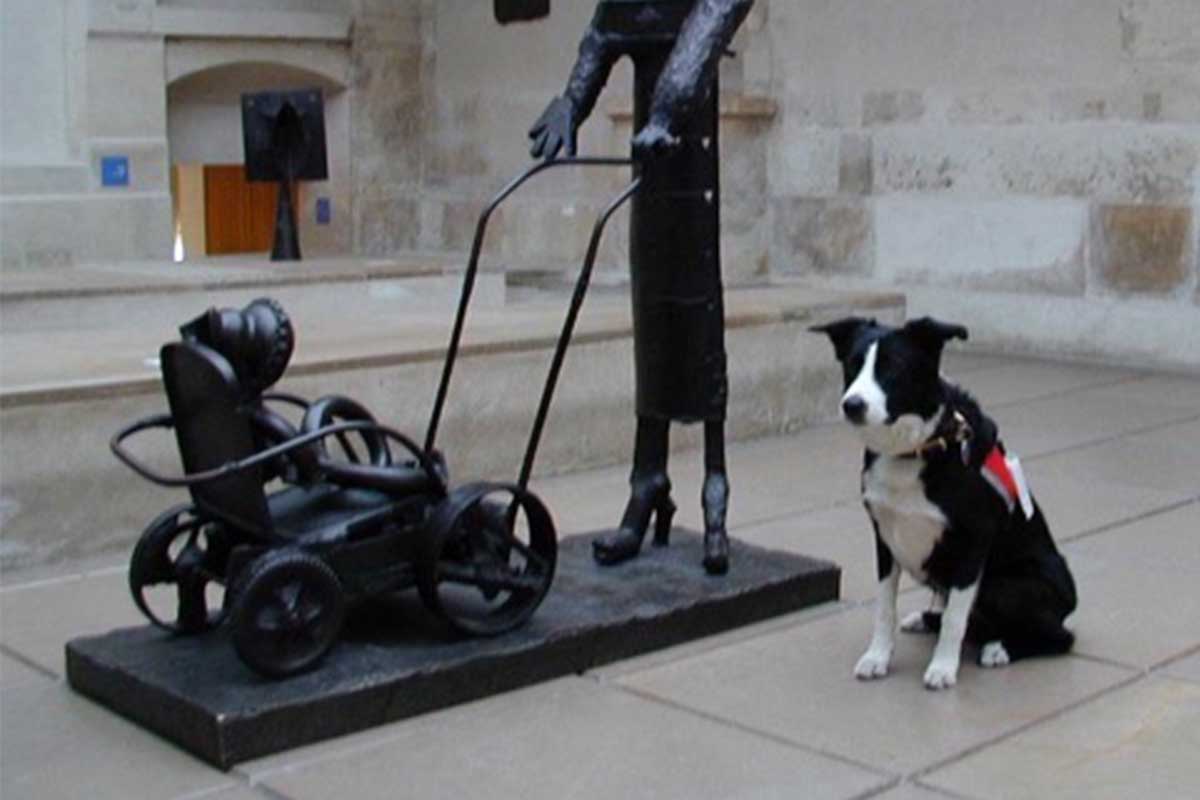Good planning is absolutely necessary when you are traveling with a service dog. Having the proper paperwork, your dog’s regular food, some toys and an extra leash, plus a clear idea about how to divide your time between human-centered and dog-centered activities, will help make the trip as stress free as possible for human and dog alike. That’s important because when it comes to service dog partners, if one is stressed, so is the other.
Going By Air
The most difficult part of flying with a dog is navigating long lines and airport security. To keep stress as low as possible, I may not feed my dog the morning of the flight until we arrive at our destination that afternoon and, depending on the duration of the flight, I may limit water, offering her ice to lick on board the flight. I always try to give her a long walk before leaving for the airport and then a short one once we get there (air temperature permitting so she does not get overheated or dehydrated).
For less stress for both of us going through security, I use a non-metallic collar/leash so that we do not have to deal with the hysteria that ensues when the metal detector goes off. An agent checks her anyway. I like to support and caress my dog’s face and look lovingly into her eyes, which is calming to all three of us. This sets the tone for the rest of the trip. Once on board, a well-trained, experienced service dog all but disappears and usually sleeps unless needed during the flight.
Train Travel
When traveling overnight on a train, walk your dog every time the smokers can go out and light up. These are the stops long enough to take your dog off the train. Here, too, a cue to go potty (ours is “smoke,” which made for some funny jokes whenever I traveled by train) is a lifesaver because sometimes the dog will get her walk in a station.
In the dining car, the well-behaved service dog will duck under the table and lie down as close to your feet as possible. The cue “under” can be taught at home before you travel. People who go by train are often very friendly, and if not, your dog will break the ice for you. Happily, this, too, helps lower stress.
Bus Trips
Closer to home, many service dogs ride the bus with their humans on a regular basis. Traveling by bus, crosstown or uptown, can be stressful for a service dog because people do not look down — they look forward, hoping to spot an empty seat. Luckily, Sky is just the right size to fit snugly on my lap where she won’t get stepped on. Larger dogs can be trained to go under the seat.
For longer bus trips, or when traveling by car, get out as often as you can. Stretch your legs, offer your dog water, and take her where she can relieve herself. Having a cue for that makes life much, much easier. It tells the dog that while this doesn’t look like your usual places, it’s exactly where to go.
Making a Good Impression
The first time I flew to Paris with my service dog Flash, I took him with me to the Musee Picasso. People came running out of every doorway to tell me I absolutely could not take my dog inside. It took about 20 minutes, including time for someone to find “the lady who could read English” to get Flash’s credentials read and to be allowed in. The following year, I went to Paris again, and once again, headed for the Picasso. Once again, people rushed out of every doorway to tell us we could not take a dog inside the museum. As I was explaining that he was a service dog, a woman’s voice piped up. “Oh,” she said, “that’s Flash. He was here last year.” A well-trained, beautifully behaved service dog, given long walks and a chance to play fetch every day of a trip, can not only do his job, thereby making travel possible, he can also make a mighty good impression, making it easier, rather than impossible, for the next person with a service dog who comes along, even if sometimes that person is you!
This article was reviewed/edited by board-certified veterinary behaviorist Dr. Kenneth Martin and/or veterinary technician specialist in behavior Debbie Martin, LVT.








